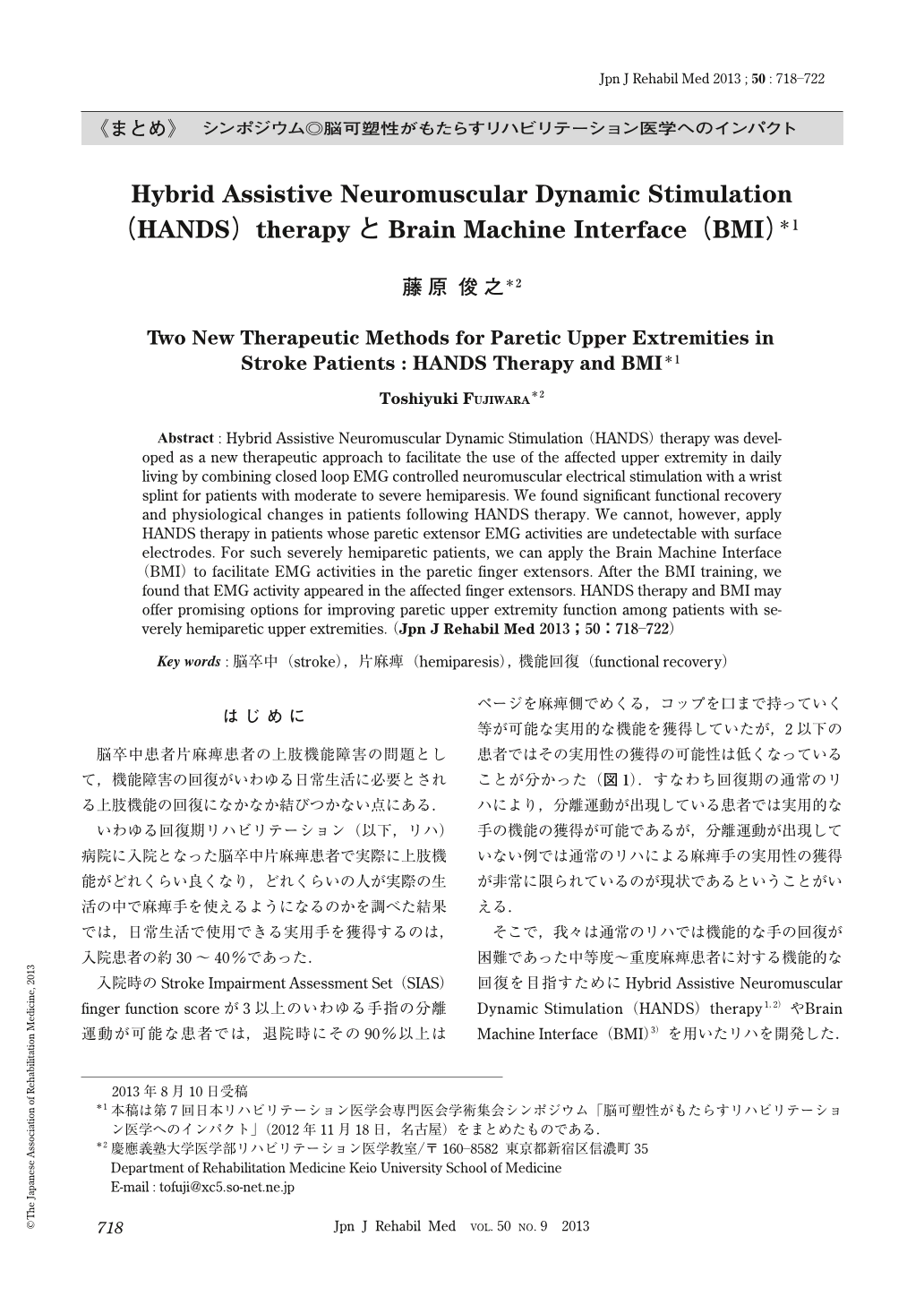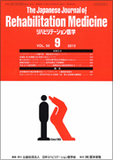Japanese
English
- 販売していません
- Abstract 文献概要
- 1ページ目 Look Inside
- 参考文献 Reference
はじめに
脳卒中患者片麻痺患者の上肢機能障害の問題として,機能障害の回復がいわゆる日常生活に必要とされる上肢機能の回復になかなか結びつかない点にある.
いわゆる回復期リハビリテーション(以下,リハ)病院に入院となった脳卒中片麻痺患者で実際に上肢機能がどれくらい良くなり,どれくらいの人が実際の生活の中で麻痺手を使えるようになるのかを調べた結果では,日常生活で使用できる実用手を獲得するのは,入院患者の約30~40%であった.
入院時のStroke Impairment Assessment Set(SIAS)finger function scoreが3以上のいわゆる手指の分離運動が可能な患者では,退院時にその90%以上はページを麻痺側でめくる,コップを口まで持っていく等が可能な実用的な機能を獲得していたが,2以下の患者ではその実用性の獲得の可能性は低くなっていることが分かった(図1).すなわち回復期の通常のリハにより,分離運動が出現している患者では実用的な手の機能の獲得が可能であるが,分離運動が出現していない例では通常のリハによる麻痺手の実用性の獲得が非常に限られているのが現状であるということがいえる.
そこで,我々は通常のリハでは機能的な手の回復が困難であった中等度~重度麻痺患者に対する機能的な回復を目指すためにHybrid Assistive Neuromuscular Dynamic Stimulation(HANDS)therapy1,2)やBrain Machine Interface(BMI)3)を用いたリハを開発した.
Abstract : Hybrid Assistive Neuromuscular Dynamic Stimulation (HANDS) therapy was developed as a new therapeutic approach to facilitate the use of the affected upper extremity in daily living by combining closed loop EMG controlled neuromuscular electrical stimulation with a wrist splint for patients with moderate to severe hemiparesis. We found significant functional recovery and physiological changes in patients following HANDS therapy. We cannot, however, apply HANDS therapy in patients whose paretic extensor EMG activities are undetectable with surface electrodes. For such severely hemiparetic patients, we can apply the Brain Machine Interface (BMI) to facilitate EMG activities in the paretic finger extensors. After the BMI training, we found that EMG activity appeared in the affected finger extensors. HANDS therapy and BMI may offer promising options for improving paretic upper extremity function among patients with severely hemiparetic upper extremities.

Copyright © 2013, The Japanese Association of Rehabilitation Medicine. All rights reserved.


